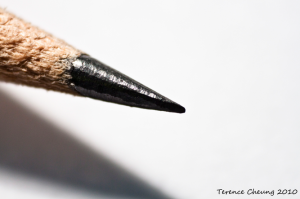Professional duratrans display material was originally designed to make brilliant display transparencies printed from negatives or internegatives. The material itself has not changed, but the originals and the printing methodology has changed significantly. Obviously we’ve moved on to high resolution digital files from large format color negatives or internegatives from film transparencies. Even the end substrate has remained the same, duratrans are still duratrans and they still get souped through photo chemistry.
What has changed most significantly is the exposure method when exposing a latent image onto duratrans film. Long ago (not that long ago) when enlargers projected images from film negatives or internegatives, the exposure machine was an enlarger. This enlarger would make the exposure with filtered light through a series of lenses and condensers. The length of the exposure varied all over the board, depending on the density of the negative and frequently reciprocity issues could arise from lengthy exposures.The final result was undoubtedly only best viewed at least the proper viewing distance, if not, further away. This was was soft and fuzzy mostly because because of the enlarged grains of the silver shown, as well as the quality of the lenses on the enlarger.
Gone are all those parts, and what’s been used for the past twenty years or so has been laser imagesetters. These are ultra-high resolution large format output devices. They are known by their manufacturers brand names, such as the Durst Lambda or Cymbolic Sciences’ Lightjet. Both use a series of lasers to expose the latent image onto photographic paper or transparency, like duratrans. The most noteworthy feature about imagesetters is that they provide an apparent resolution of 4000 dpi when printed to photo emulsions. Imagesetters have an effect on photo emulsions that give it this apparent resolution. The actual optical resolution is 300 DPI. You are getting a sharp image, no matter.
This end result gives a superior resolution readily seen on backlit transparenices such as duratrans.
Now, the problem arises when trying to locate a PSP still using a Lightjet or Lambda as they are no longer in production. Why you might ask? Because they’ve been replaced with a less expensive counterpart that gives very satisfactory results, and that is the inkjet printer. Inkjet technology still does not hold a match to the capability of the old imagesetters . Now these nearly extinct print makers are such because they can be costly to maintain, as most came with monthly service contracts. In a recessional economy, you may find even less and less of them.
However, when an advertiser or museum curator or anyone with visually discriminating objectives, there is still only one solution: to find a printer with a well-maintained imagesetter. There is still nothing in this world that beats the sharpness of photo emulsion being exposed by an imagesetter like a Lightjet, nothing! Laser printing still is ‘sharpest tool in the shed’ give us a call @ 1.800.829.4562 or visit www.photoworksgroup.com
photo credit: Terrence Cheung
Recent Posts
Archives
- September 2016
- March 2016
- December 2015
- November 2015
- October 2015
- August 2015
- July 2015
- June 2015
- May 2015
- April 2015
- January 2015
- November 2014
- October 2014
- August 2014
- July 2014
- June 2014
- May 2014
- April 2014
- March 2014
- February 2014
- January 2014
- December 2013
- November 2013
- October 2013
- September 2013
- August 2013
- July 2013
- June 2013
- April 2013
- November 2012
- October 2012
- September 2012
- August 2012
- July 2012
- June 2012
- May 2012
- April 2012
- March 2012
- February 2012
- January 2012
- December 2011
- November 2011
- October 2011
- September 2011
- August 2011
- July 2011
Categories
- & mounting
- ADA signage
- airport graphics
- Backlit Fabric Graphics
- backlit graphic
- backlit graphics
- blog
- Contour cuts
- digital imaging
- Dye Sub
- Dye Sublimation Graphics
- Fabric Graphics
- fabrication for architects
- finishing
- Finishing services
- Framing
- Giclee
- Large format graphics
- Latex prints
- Lightjet prints
- Lightjet Prints
- Museum Exhibits
- Outdoor banners
- Prints on metal
- Sports Facility Exhibits
- Trade Show Displays
- Uncategorized
- UV Direct Prints


Recent Comments